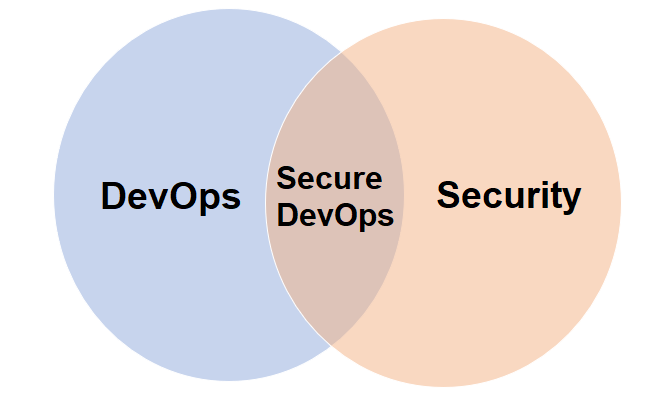Understand DevSecOps
Cloud adoption continues to accelerate as organizations seek to support business productivity, enable remote work, and scale operations efficiently. However, this rapid adoption without adequate security infrastructure can inadvertently compromise data and expose organizations to significant risks.
The security gap in cloud applications
Security gaps persist even as cloud adoption grows. Organizations moving to cloud platforms don't always implement appropriate security controls:
Encryption gaps: Many cloud applications fail to properly protect data:
- Data at rest: Unencrypted databases, storage accounts, and file systems leave data vulnerable when storage media is accessed, stolen, or improperly disposed of.
- Data in transit: Applications transmitting data over unencrypted connections expose information to interception. Even internal network traffic should be encrypted.
- Common gaps: Significant percentages of SaaS applications don't encrypt data adequately. Storage applications often lack encryption both at rest and in transit. Collaboration applications frequently transmit sensitive information without proper protection.
Session protection deficiencies: Weak session management creates vulnerabilities:
- Missing HTTP security headers: Applications that don't implement security headers like HSTS (HTTP Strict Transport Security), CSP (Content Security Policy), and secure cookie attributes leave sessions vulnerable to hijacking.
- Token exposure: Session tokens transmitted insecurely can be intercepted and reused by attackers to impersonate legitimate users.
- Limited adoption: Very few SaaS applications implement comprehensive HTTP header session protection, leaving users vulnerable to session-based attacks.
What is Secure DevOps (DevSecOps)
The tension between speed and security: DevOps emphasizes working faster through automation, continuous integration, and rapid deployment. Security traditionally emphasizes thoroughness, careful review, and comprehensive testing. These goals can seem contradictory.
Traditional security approach problems: When security concerns are addressed only at the end of the development cycle, several issues arise:
- Unplanned work appears right before deployment when teams are under pressure to release.
- Security issues discovered late require expensive rework of completed features.
- Security becomes a bottleneck that slows or blocks releases.
- Teams view security as an obstacle rather than an enabler.
- Critical security vulnerabilities might be deprioritized due to release pressures.
The Secure DevOps solution: Secure DevOps integrates security with DevOps practices into a cohesive set of activities designed to meet the goals of both DevOps velocity and security effectiveness. Security becomes part of the development process from the beginning rather than a gate at the end.

Benefits of integration: A Secure DevOps pipeline allows development teams to work fast without breaking their project by introducing unwanted security vulnerabilities. Security and velocity become complementary rather than opposing goals.
Note
Secure DevOps is also sometimes referred to as DevSecOps. You might encounter both terms, but each refers to the same concept. The terminology difference is purely stylistic. The practices and principles remain identical.
How security changes in Secure DevOps
Traditional security methodologies: Historically, security operated on slower cycles and focused primarily on:
- Access control: Managing who can access systems and data through authentication and authorization mechanisms.
- Environment hardening: Configuring systems to remove unnecessary services, apply security patches, and enforce secure configurations.
- Perimeter protection: Using firewalls, intrusion detection systems, and network segmentation to protect the network boundary.
Expanded security scope: Secure DevOps includes these traditional security methodologies but extends security concerns throughout the entire software development lifecycle. With Secure DevOps, security is about securing the pipeline itself and everything that flows through it.
Pipeline security focus: Secure DevOps involves determining where to add protection to the elements that plug into your build and release pipelines:
- Source code repositories.
- Build servers and agents.
- Artifact storage and registries.
- Deployment tools and processes.
- Infrastructure as code templates.
- Configuration management systems.
- Secrets management solutions.
Comprehensive approach: Secure DevOps shows you how and where to add security to your automation practices, production environments, and other pipeline elements while maintaining the speed benefits of DevOps. Security controls are automated and integrated rather than manual and separate.
Key questions Secure DevOps addresses
Secure DevOps helps organizations answer critical security questions:
Third-party component security:
- Is my pipeline consuming third-party components, and are they secure?
- Do these components come from trusted sources?
- Are component signatures verified?
- Are licenses compatible with our usage?
Vulnerability management:
- Are there known vulnerabilities within any of the third-party software we use?
- How do we track vulnerability disclosures for our dependencies?
- What's our process for updating vulnerable components?
- Do we have an inventory of all dependencies including transitive ones?
Detection speed (time to detect):
- How quickly can I detect vulnerabilities?
- Are security scans automated in the pipeline?
- Do we have runtime monitoring for security issues?
- How fast do security alerts reach the right people?
Remediation speed (time to remediate):
- How quickly can I remediate identified vulnerabilities?
- Can we deploy fixes through the same automated pipeline?
- What's our process for emergency security patches?
- How do we verify that remediation are effective?
Security as code
Automated security practices: Security practices for detecting potential security anomalies must be as robust and fast as other parts of your DevOps pipeline. This includes:
Infrastructure security automation:
- Automated security scanning of infrastructure as code templates.
- Policy-as-code enforcement for cloud resource configurations.
- Compliance checking before infrastructure deployment.
- Continuous monitoring of infrastructure security posture.
Application security automation:
- Static application security testing (SAST) during builds.
- Dynamic application security testing (DAST) in staging environments.
- Software composition analysis for dependency vulnerabilities.
- Container image scanning before deployment.
- Runtime application self-protection (RASP) in production.
Continuous security: Security in Secure DevOps isn't a single checkpoint. It's continuous validation throughout development, deployment, and operation. Every stage of the pipeline includes appropriate security controls that execute automatically without slowing down delivery.